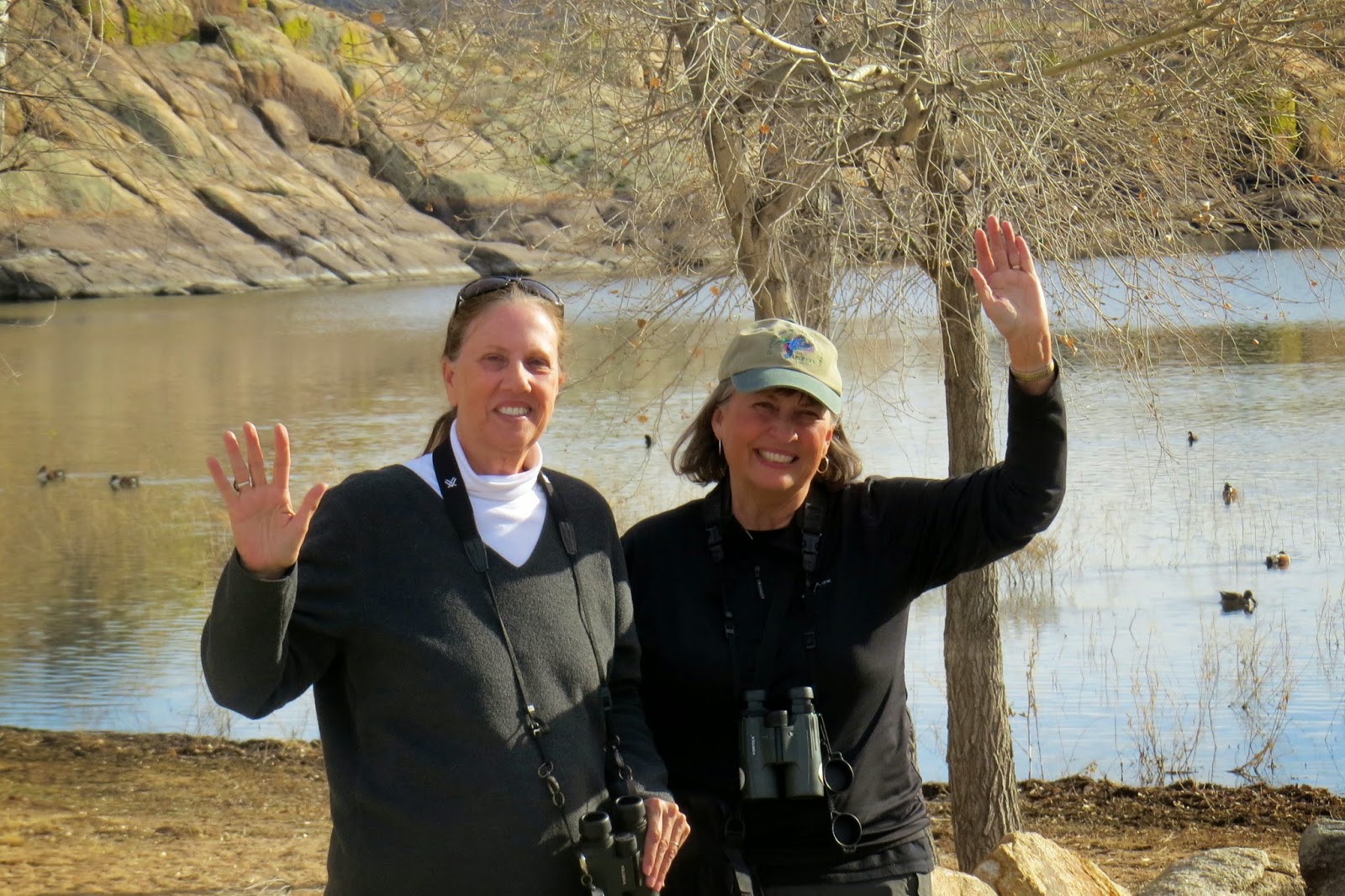A visit to the mile-high city of Prescott provides a whole new habitat for birds that are rarely, if ever, seen in the desert valley of Phoenix. Needing no coaxing to join my friends on this trip, we met at 7:30 a.m. at McD's on East Carefree Highway after driving from our various home locations (Peoria, Scottsdale, Apache Junction). Kathy Heyman joined Susan and I for this outing. Kathy spoke of getting more serious about birding and wanting to see how we went about it. It was easy for me to relate to that idea: it was just a few years ago ( 2011) that life presented me the opportunity to take my casual birding to another level. Susan has been a key birding companion in helping me drop my "casual" habits to, instead, learn actual identification markers for the birds to tell "why this bird is not that bird".
After about an hour's drive, we arrived at our first birding site, Watson Lake Riparian area. At 38 degrees F., a bit chillier than our Valley's 55 degrees, we quickly donned our heavier coats to follow the trail toward a bridge that runs over the highway. This first stop of the day was mainly to see if a Barn Owl might still be located on the support-beams beneath the bridge. Kathy had shown it to Susan a couple months ago and although we spent a little over a half hour there, the Owl was a no-show.
We planned to visit a total of four birding spots in the Granite Dells area of Prescott today so the next stop was at a Granite Dells community with lots of tall pines and junipers.
 |
| Kathy and Susan |
 |
| Western Bluebird (male) |
 |
| Granite Basin Lake |
 |
| Ring-necked Duck |
Final stop of the day was at Willow Lake. Watson and Willow Lakes are small man-made reservoirs within the Granite Dells formation. There appears to be a very good trail system throughout the Dells. We saw hikers on many different trails and, at Willow Lake, met one couple who had just hiked around both lakes - approximately five miles.
 |
| Kathy & Susan at Willow Lake |
We spotted a total of 38 species today.
Without too much comment on the photo below, I'll point out the alignment of the holes in this Ponderosa Pine. Sapsuckers tend to drill holes in a fairly straight line; they are after insects. When they leave, the hole becomes a "well" filled with sap. I've often seen Ruby-crowned Kinglets at sapsucker wells enjoying the insects that caught in the sap.
 |
| Kathy and Susan at the sapsucker wells |
We wrapped up our day in the Granite Dells area about 3:30 p.m. for the return trip to our cars and respective homes.
While we had been enjoying an active day in the field, our birding friends back in the Valley were rushing to Sweetwater Wetlands in Tucson to see a rare pair of Trumpeter Swans that had been reported in late morning out on one of the big ponds. While we regretted not being able to make that run ourselves, we were reminded of another birder's tag line: So Many Birds, So Little Time.
* * *
View this checklist online at http://ebird.org/ebird/view/checklist?subID=S21585087
View this checklist online at http://ebird.org/ebird/view/checklist?subID=S21585189
View this checklist online at http://ebird.org/ebird/view/checklist?subID=S21585430
View this checklist online at http://ebird.org/ebird/view/checklist?subID=S21585530


No comments:
Post a Comment